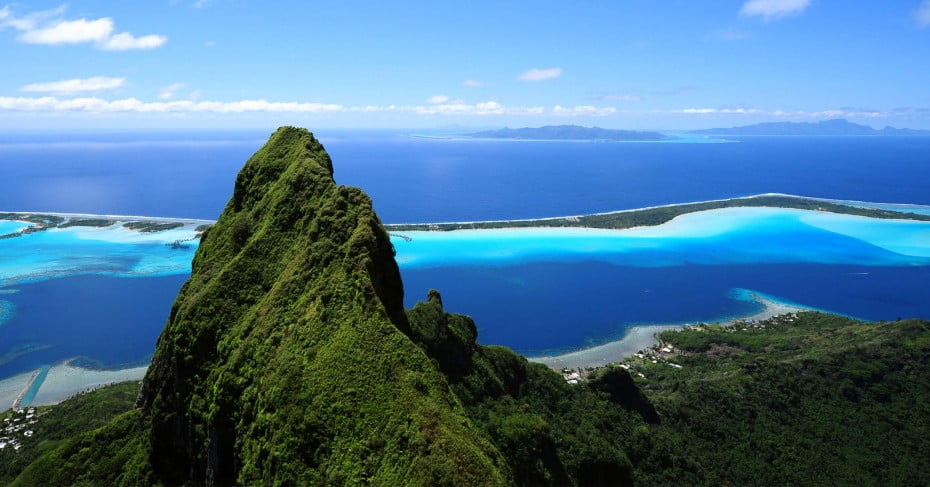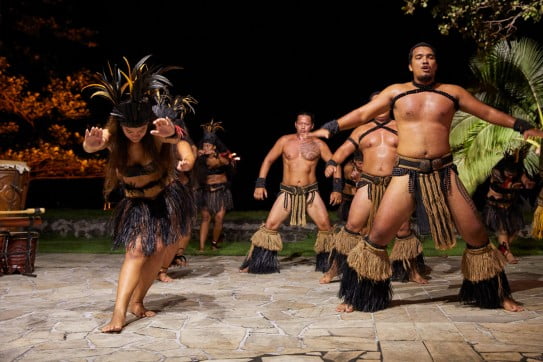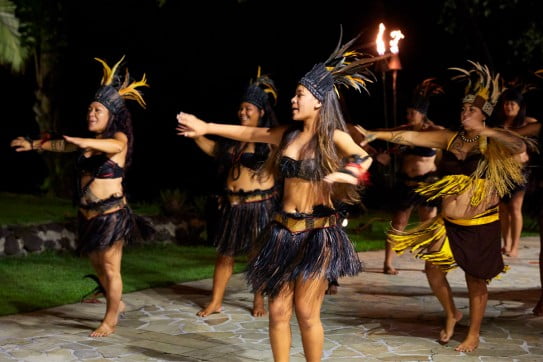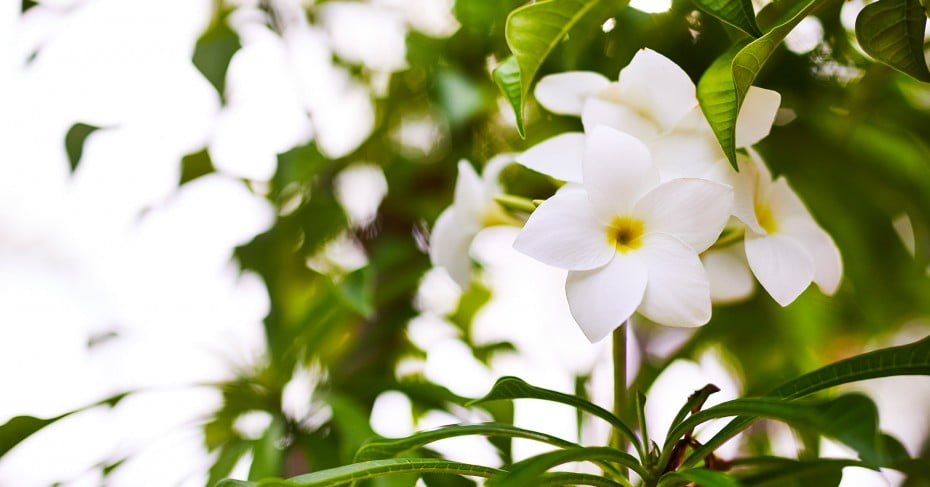The captivating culture of Tahiti
The first thing you'll notice about The Islands of Tahiti is the dramatic geography - ancient rainforest-cloaked volcanic cones that rise majestically out of a turquoise ocean. This extraordinary natural beauty has remained intact throughout the nation's history, because settlement is mostly limited to the coastal strip and valleys of the main islands.
From a foundation of Polynesian traditions, which arrived with the first settlers in the 9th century, Tahitian culture has evolved to embrace many elements of French culture. The islands became a French protectorate in 1842 and today Tahiti is an autonomous overseas country of the French Republic.
The largest marae, Ahu-o-Mahine, dates to the 17th century and is built on even older remains.

A relaxing way to experience everyday French Polynesian culture is with the Circle Island Tour, which takes you right around the main island of Tahiti. Highlights include Point Venues (where Captain Bligh first stepped ashore), Maraa Grotto Cave, the Paul Gauguin Museum and the Museum of Tahiti and her Islands.
There are also fun Segway tours of Papeete that whizz you around significant places in the city, such as the market, Notre Dame Cathedral, house of Queen Marau, Monument of General de Gaulle, Paofai Temple and the naval base.
Tahitian customs
An enlightening way to discover Tahitian traditions is with a cultural tour to the Opunohu Valley, a volcanic crater created millions of years ago, where you'll explore a complex of marae (open-air temples). The largest marae, Ahu-o-Mahine, dates to the 17th century and is built on even older remains. In the past, warriors prayed there every day, for luck and strength. Now surrounded by forest, it has an air of calm, of Mana.
The concept of mana saturates Tahitian culture. It has a wider meaning than the Maori definition of authority and earned respect. In Tahiti Mana also evokes a life force, at once life-giving and destructive, noble and frightening. Even black pearls, unique to these islands, have a kind of Mana because they provide vital income for residents of remote atolls.
The re-emergence of traditional tattooing is tangible evidence of how Tahitian customs are still alive today. Tattoos are a way to record family origins, rites of passage and notable life events. They are worn with pride by young and old. There are several respected tattoo studios in Papeete, if you'd like a unique skin-art souvenir to wear home.


Tahitian dance culture
The art of dance is hugely important to Tahitians. Traditional dances were developed to attract a lover, challenge an enemy, welcome friends or worship a god. Every dance had a purpose and meaning.
In the 1800s, however, missionaries living in the islands spoke out against traditional dancing - which they found altogether too erotic - and had it banned. This ban was in place for until 1950. Fortunately, a secret dance culture kept the art form alive, so that skills and knowledge could be passed from one generation to the next. Today Tahitian dance culture is thriving. It's celebrated heartily every July during Heiva, a nationwide cultural event and competition.
On your holiday in The Islands of Tahiti, make a point of seeing a dance show because the recent revival of Tahitian dance is wonderful to behold. Most of the larger resorts in Tahiti offer 'dinner and show' nights, which feature many of Tahiti's best dancers.
Say it with flowers
Flowers are everywhere in The Islands of Tahiti - in gardens, wilderness areas and enhancing the beauty of the locals. French Polynesian people wear a flower every day - either tucked behind one ear or as a hair ornament. For special occasions, a head garland is the ultimate fashion accessory. Of all the Tahitian flowers you'll see, the most important is tiare - a type of gardenia with a beautiful fragrance.
If you're planning to wear a flower behind your ear while visiting The Islands of Tahiti, here are the rules: A flower worn behind your right ear mans you are single and available; a flower worn behind your left ear means you are married, engaged or otherwise taken.

The crafts of Tahiti
While you're exploring the markets and craft shops of Papeete, Bora Bora or Moorea, you'll see wonderful examples of local craft. Fibres from the screw pine tree and coconut palm are woven and plaited to make hats, bags, baskets and mats. Applique and patchwork techniques are used to create tifaifai, beautiful hand-made bed covers. Native tou and miro wood is carved to create spears, puzzles and bowls. Even the islands' volcanic rock gets the creative treatment.
Black pearls grown in the lagoons of remote atolls are another local treasure to look for. Legend says that Ora, the god of peace and fertility, slid down to earth on a rainbow to present the beautiful Princess of Bora Bora with a black pearl. She was pretty impressed, as you will be.
It's easy to find something of beauty to take home as a souvenir at the Papeete Market, the Vaima shopping centre and hotel shops. If you venture out of town, you might also get the chance to buy crafts directly from craftspeople at their studios.